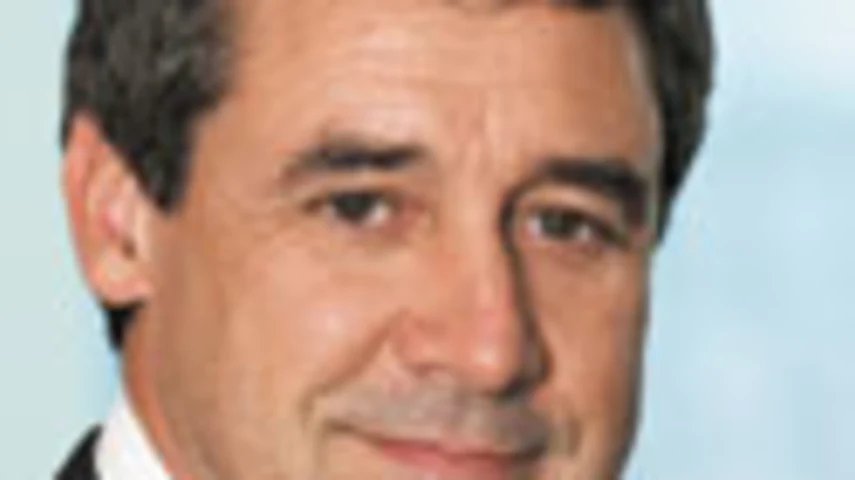Exploring the index fund universe



The index fund space, while staying strong through market volatility, has been busy developing new and exotic products. Janine Mace takes a closer look at the sector, its new variations and life after ETFs.
They certainly aren’t vanilla any more. That’s the key conclusion you draw when it comes to index funds these days.
Far from being simple ways to capture the market return, index funds are busy developing exotic new flavours and an interesting range of new names. Liquid alternative beta, non-price weighted, minimum volatility – you name it, and there seems to be an index fund to match it.
As a recent State Street Global Advisors (SSgA) report noted: “In recent years, indexation has moved beyond market capitalisation to exploit market themes through approaches such as value based indexation and minimum volatility indexation.”
It’s all a long way from the plain vanilla index fund that replicates a straightforward index like the S&P/ASX200.
These days, many index funds are far from simple, and while many of these new varieties are yet to arrive in the retail space, providers are busy eyeing up their potential.
Fund inflows remain strong
Although these new products represent a fresh approach to index investing, inflows into traditional index funds remain strong.
This is largely due to the popularity of indexing in the wake of the global financial crisis (GFC) and is a trend repeated in most developed markets, according to Vanguard Australia principal, corporate affairs and market development, Robin Bowerman.
“Coming out of the GFC, we have seen strong inflows and adjustments around index funds. This has been driven by advisers and clients being disaffected by active fund performance during the GFC,” he says.
The disillusionment has resulted in inflows into both managed index funds and their listed cousins, exchange traded funds (ETFs).
Susan Darroch, SSgA Australia’s head of global structured products, agrees indexing remains popular. “Generally, we are seeing continuous inflows into index funds. We are seeing growth in both index products and asset inflows.”
One of the newer kids on the block, Realindex Investments, has also seen strong inflows, according to its chief executive officer, Andrew Francis.
“Index funds in general have held up in terms of flows over the past couple of years. Financial planners are looking for simplicity, transparency and lower cost solutions, so this has fed demand for index funds across the board,” he explains.
Another market observer who has watched with interest the growing popularity and sophistication of index funds is Standard & Poor’s (S&P) director of fund services, Paul O’Connor.
“Six to seven years ago the index fund market was mainly about broad market exposure index funds, but with the increased use of indexing we are seeing providers of index funds expand their products.
"We are seeing increasingly sector specific index funds, or ones with a yield focus to capture the higher dividend payment stocks on the ASX, or with a tailored emerging market base such as the BRIC countries or thematic stocks,” he explains.
However, despite the arrival of new products, most inflows are into traditional broad based index funds.
“If you look at the indexing universe, assets are mostly still in the broad based vanilla funds,” Bowerman notes.
“Other people come into the space, but if you look at ETF index funds, 85 per cent of them are in broad based index funds – as they should be,” he says.
New variations launched
The popularity of traditional index funds has not stopped providers launching new funds. As Bowerman explains: “People are going into the spaces they can see have succeeded overseas.”
In the institutional market, new funds have been launched to cater for demand from major investors such as industry funds looking for ways to provide their services to members at a lower cost.
This has seen new index strategies such as valuation tilt find a ready market.
“We are seeing a lot of investors now who are considering indexing who would not have before, due to these new products. There is increased sophistication in the indexing market and this is reflected in new offerings and users,” Darroch says.
O’Connor agrees many of the latest offerings are in response to investor demand – particularly at the institutional level.
“There is increasing use of tactical asset allocation and dynamic asset allocation, so this has encouraged providers to offer much more tailored index offerings. Also, index funds investors like to quickly buy in and out of markets, so these new funds are appealing as they are very transparent and liquid,” he says.
One of the major growth areas has been in liquid alternative beta funds, which replicate the risk/return of fund of hedge fund products.
“Given the fees charged, they are quite compelling compared to hedge funds,” O’Connor notes. At around 1 per cent, plus a 10 per cent performance fee, the new funds are about half the price of a fund of hedge funds.
“We are seeing growing institutional investor interest and increased education in the retail sector about these products,” he explains.
Darroch believes there is interest in the new products as they offer advisers and investors a fresh approach for portfolio construction.
“Alternative beta options can include different things such as adding a valuation tilt to the portfolio. Previously, you would have needed to go to an active manager to do this and it would have been expensive,” she says.
Another product which has taken off is fundamental indexing, which utilises the Research Affiliates Fundamental Index methodology to select and weight companies according to their economic footprint.
In Australia, the Realindex funds have clocked up $2.8 billion in funds under management since their launch through Colonial First State in 2008. (Currently, US$50 billion worldwide is invested using fundamental indexing.)
“Indexing in general has had a big surge in growth, and non-market cap has been a big part of that,” Francis explains.
“Fundamental indexing does not replicate market performance and is part of the growth of alternative beta or non-price weighted indices. There is a lot of development and interest in this area,” he says.
He believes fundamental indexing is appealing for advisers not keen to blindly follow the market cap approach.
“There will always be a place for market cap funds as some investors want that, but we believe overall it is not necessarily the best long-term solution. There is growing traction in non-market cap index products,” Francis says.
Other asset classes such as fixed interest are also likely to get the fundamental index treatment.
“Within the fixed interest index space, the main indices are based on market capitalisation, and therefore the countries with the highest debt make up most of the index. We think the fundamental index approach makes sense in shares, and it also makes sense in fixed interest. It is an area we are looking at with interest,” he says.
Francis expects fundamental index funds to continue growing. “They are easy to understand and do not have the same issues with funds under management limitations as some of the other non-market cap strategies.”
Volatility no handicap
Although most active managers are quick to point to the current share market volatility and uncertainty as a time when stock-pickers will shine, index fund providers are unconvinced.
As Bowerman notes: “Vanguard in the US offers both active and index funds, so we are agnostic about it. It is not so much a market timing issue, but more about the right portfolio construction for the particular investor.”
Francis agrees market volatility is not an issue. “It comes back to what the client is looking for,” he says.
“Financial planners like the simplicity, lower turnover and lower price of indexing, so they are still interested in indexing despite the current volatility. It is not about market conditions, it is about your philosophy on investment and market efficiency,” Francis says.
Darroch believes indexing suits volatile conditions due to its diversification benefits. “An index fund is more diversified than an active fund, so it offers more diversification protection in volatile markets,” she says.
“It is not necessarily the wrong time to be invested in index funds in volatile markets. An index fund goes down at the same level as the market, but active managers can perform better – or a lot worse – than the market,” Darroch says.
O’Connor agrees: “I believe it has a strong role to play in a portfolio across the economic cycle. Active management is a zero sum game, and it is important to remember it is about how much research you are prepared to do into the managers you select.”
Darroch also points to the importance of selecting skilful managers. “You have to think you can pick the manager that can get the decision right. With indexing, it could be a less volatile ride than with an active manager.”
Like many other indexing advocates, she believes the two approaches are not mutually exclusive. “You could have the core indexed and then choose a manager that you think will outperform as a satellite, or have a minimum volatility play to reduce volatility and risk in the portfolio.”
Given the current state of the markets, Darroch cites the availability of index products designed to deal with this. “Indexing can provide a minimum volatility portfolio, so this is a great tool for when markets are very volatile – but at lower fees than active management.”
Choosing an investment philosophy
Most supporters of indexing believe the suitability of the approach depends on an investor’s views about markets.
“You need to have a philosophical view on markets and whether they are efficient or not efficient,” O’Connor explains.
He points out that in the US there are “very different levels of efficiency in various markets and this influences the ability to outperform by a manager”. In the heavily researched S&P500 market, for example, it has proved very difficult for managers to outperform, while the reverse is true in the small caps market.
This is the key finding in the latest Standard & Poor’s Indices Versus Active Funds Scorecard (SPIVA). It found over the five years to 31 December 2010, more than 60 per cent of all active funds failed to beat their respective benchmarks, with the exception of active Australian small-cap equity funds.
“Recently there has been a risk on/risk off environment in markets, and this leads to idiosyncratic risk not being as well rewarded as it has been historically,” O’Connor says.
By way of example, he points to the financials sector, where the value dispersion of stocks has not been as significant in the pricing of individual stocks as during stable market conditions.
“Active managers can see a lot of value in some sectors, but over the past three and a half years they have not been rewarded for identifying stocks that offer that. In the current investment conditions, it has been difficult for active managers to outperform,” he explains.
O’Connor believes the next SPIVA report will reinforce this view. “I expect the next one to show it has been a challenge for active managers, as there has been a risk aversion spike. Managers taking on idiosyncratic risk have found it difficult, as people tend to sell the whole market in these types of conditions.”
Life after ETFs
Given the hype surrounding the dramatic growth of ETFs in the Australian retail market, the question arises of whether there is still a role for managed index funds. Or will their sexy listed cousin consign them to the product dustbin? Most experts are convinced there is still a place for managed index funds.
Francis believes ETFs are just another product offering. “They are no better or worse, just a choice. ETFs are doing exactly the same as managed funds. They are just a new way to access the index.”
The two types of products can comfortably sit together, Darroch says. “In some places a managed fund is better, and in others the ETF is more appropriate.
"A client who wants to dollar cost average or make regular contributions is not right for ETFs, as the brokerage is so expensive. In this situation, a traditional unit trust can be a better option.”
However, she recognises ETFs can be better suited to certain situations. “An ETF may be a short-term investment play on resources or financials, as you can do it quickly and easily,” she says.
Francis feels managed index funds have some clear advantages as they “offer certainty as you get the closing price of the market, versus with the ETFs, where the price depends on when you trade the ETF and the spread they are trading at”.
Managed index funds are unlikely to disappear, according to O’Connor. “There is still a place for these in the portfolio. The more tailored index funds probably have more use for investors interested in active asset allocation, but there will always be a role for all types of index funds.”
From the adviser perspective, it is not an either/or situation, according to Francis. “Both will continue to be used in portfolios. It depends on how the financial planner’s business is set up and established.”
It also depends on the size of the investor. “For bigger institutional investors, they can often get a traditional unit trust product cheaper than an ETF, so that may suit them better,” Darroch notes.
Vanguard does not see the two vehicles as incompatible, according to Bowerman.
“It is important to remember ETFs are index funds. ETFs are a trading mechanism but they are an index fund. In Vanguard, it is a class of units within our Australian equities share fund,” he explains.
Bowerman believes ETFs are bringing in a new class of investors who like indexing, but prefer the listed approach. “The popularity of ETFs is helping to grow the indexing marketshare. People can now choose whether they are going through the managed index fund or ETF door,” he says.
“Some people will move to ETFs from managed funds due to cost, but it is more likely that they are attracting new people,” Bowerman says.
Recommended for you
The central bank has released its decision on the official cash rate following its November monetary policy meeting.
ASIC has cancelled the AFSL of a Melbourne-based managed investment scheme operator over a failure to pay industry levies and meet its statutory audit and financial reporting lodgement obligations.
Melbourne advice firm Hewison Private Wealth has marked four decades of service after making its start in 1985 as a “truly independent advice business” in a largely product-led market.
HLB Mann Judd Perth has announced its acquisition of a WA business advisory firm, growing its presence in the region, along with 10 appointments across the firm’s national network.











